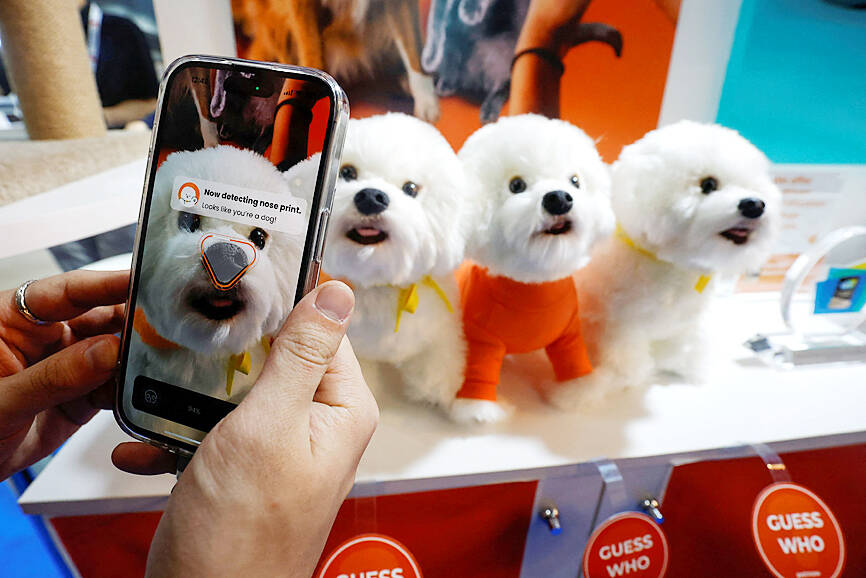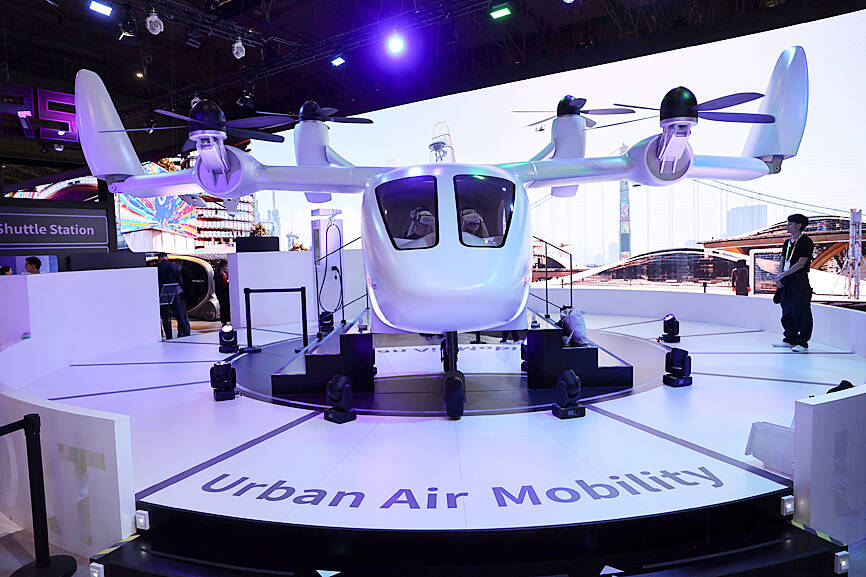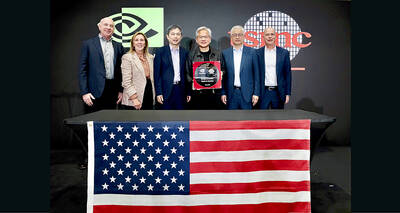The Mobile World Congress (MWC) is primarily a gathering for the bigwigs of the telecoms industry, but far from the main thoroughfares of the vast conference there are always hidden tech gems.
Among the most offbeat products spotted at last week’s event was artificial intelligence (AI) clone technology.
As advertising slogans go, “you can live forever” is up there with the best.

Photo: Reuters
That is how Memori Yamato described the “personalized AI clone” from her Japanese company Alt Inc.
“Your descendants can continue to speak and interact with you, even after your death,” Yamato said.
The idea is to upload as many videos, images and audio samples as you can while alive.

Photo: Reuters
The system would use that data to generate an AI mirror, cloning you in the digital world.
“It will look like you, it speaks in your voice and it even thinks like you,” she said.
The idea has been nine years in the making, and feedback from early users suggests the technology has nailed appearances and voices, she said.
NOSEPRINT
A dog’s nose carries similar identifying traits as a human fingerprint. South Korean start-up Petnow Inc took this information and ran with it — like a dog after a stick — to create a biometric database of pets based on noseprints rather than microchips.
“Since the 1940s, we’ve known that dogs’ noses worked a little like fingerprints,” Petnow business development manager Peter Jung said.
About 100,000 animals are abandoned each year in South Korea, often because owners cannot afford vet bills, he said.
“Less than 10 percent have chips because people don’t like the process,” he said.
Petnow just requires a photo and AI does the rest, ensuring the photos are good enough for identity purposes.
Jung said that 50,000 pet owners have signed up since last year, and he hopes the government will change the rules to allow his system to replace chips.
Cat lovers need not worry.
Their noses might be too petite to be identifiable, but each feline face is unique and can be used in the system, the company said.
TAKING FLIGHT
A staple from the pages of science fiction and the dreams of the superrich, flying taxis could be available as soon as 2025, SK Telecom Co said.
At the MWC, some attendees got an early taste, thanks to virtual reality headsets and a prototype complete with juddering seats.
Halfway between a helicopter and a drone, the craft has six electric motors that allow vertical takeoffs and landings.
It can carry up to four passengers and move at speeds of up to 320kph.
South Korea’s biggest telecoms provider developed it with Californian start-up Joby Aviation and hopes it will solve congestion in South Korea’s cities without adding to global warming.
“In Korea, in urban areas, we have severe traffic congestion, but constructing a mass transportation system like a highway or subway needs many social costs,” SK Telecom manager Ken Wohn said.
“Using this UAM [Urban Air Mobility] service can shorten our customers’ travel time without making so much infrastructure,” he said.
NEVER ALONE
People might live their later years in the company of “socially intelligent” robots capable of “building an emotional relationship” with them.
That is the vision of Spanish technology outfit Eurecat, which has developed a robot called NHOA — or “never home alone.”
It is designed to reduce the loneliness of older people living at home.
The orange and white robot stands 160cm tall and can be controlled with a touchscreen and by voice.
Eurecat healthcare innovation manager David Mari said the aim was not to replace human relationships, but to “humanize” the applications and connected objects used by older people.

Jensen Huang (黃仁勳), founder and CEO of US-based artificial intelligence chip designer Nvidia Corp and Taiwan Semiconductor Manufacturing Co (TSMC, 台積電) on Friday celebrated the first Nvidia Blackwell wafer produced on US soil. Huang visited TSMC’s advanced wafer fab in the US state of Arizona and joined the Taiwanese chipmaker’s executives to witness the efforts to “build the infrastructure that powers the world’s AI factories, right here in America,” Nvidia said in a statement. At the event, Huang joined Y.L. Wang (王英郎), vice president of operations at TSMC, in signing their names on the Blackwell wafer to

AI BOOST: Although Taiwan’s reliance on Chinese rare earth elements is limited, it could face indirect impacts from supply issues and price volatility, an economist said DBS Bank Ltd (星展銀行) has sharply raised its forecast for Taiwan’s economic growth this year to 5.6 percent, citing stronger-than-expected exports and investment linked to artificial intelligence (AI), as it said that the current momentum could peak soon. The acceleration of the global AI race has fueled a surge in Taiwan’s AI-related capital spending and exports of information and communications technology (ICT) products, which have been key drivers of growth this year. “We have revised our GDP forecast for Taiwan upward to 5.6 percent from 4 percent, an upgrade that mainly reflects stronger-than-expected AI-related exports and investment in the third

RARE EARTHS: The call between the US Treasury Secretary and his Chinese counterpart came as Washington sought to rally G7 partners in response to China’s export controls China and the US on Saturday agreed to conduct another round of trade negotiations in the coming week, as the world’s two biggest economies seek to avoid another damaging tit-for-tat tariff battle. Beijing last week announced sweeping controls on the critical rare earths industry, prompting US President Donald Trump to threaten 100 percent tariffs on imports from China in retaliation. Trump had also threatened to cancel his expected meeting with Chinese President Xi Jinping (習近平) in South Korea later this month on the sidelines of the APEC summit. In the latest indication of efforts to resolve their dispute, Chinese state media reported that

CHINESE EXPORT CURBS: A dispute between China and the Netherlands could halt chip supply, affecting vehicle production, US and European auto associations said Groups representing major automakers late on Thursday warned that a chip disruption stemming from a dispute between China and the Dutch government could quickly affect US auto production. Automakers and their suppliers received notice from chipmaker Nexperia (安世半導體) last week that it could no longer guarantee delivery of its chips, the European Automobile Manufacturers Association said, adding that manufacturing could be significantly disrupted. In the US, the Alliance for Automotive Innovation, which represents General Motors, Toyota, Ford, Volkswagen, Hyundai and nearly all other major automakers, urged a quick resolution. “If the shipment of automotive chips doesn’t resume — quickly — it’s going to